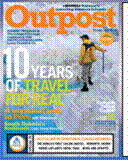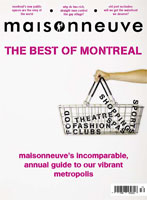
There was a time when TV magazines were hot stuff, fat with retail advertising, competitive in the marketplace and vital to the menu of offerings of a daily newspaper. If ever there was proof that this time has passed, it was this past weekend's edition of
Globe Television, a magazine slimmed down (some would say stripped down) to a shadow of its former self.
In his
opening column, Editor Andrew Ryan gives all the reasons for doing this except the one that really counts -- saving money. "The result is a tighter listings package that covers a broader range of viewing options, while saving readers time and effort," says Ryan. Maybe so, but when they say it's the principle, not the money...it's the money.
Last week
Globe Television was 60 pages. This week, a mere 28. "Your Guide to the Best on TV This Week" is printed on a slightly higher, brighter grade of newsprint. But if you throw it on a coffee table, there is no thunk; it drifts down like an autumn leaf.
It's true that changing habits mean that publications have to change with them. And the recent travails of
TV Guide in the U.S. and in Canada suggest that the days of listings magazines are numbered. Digital subscribers tend to use on-screen or on-line guides, for one thing. And, with the launch of its redesigned (and still buggy) website, GlobeandMail.com, the
Globe is trying to lure TV viewers to supplement the slimmed down guide with more expansive online listings and with e-bulletins they can subscribe to about their favourite shows.
Gone are daytime listings, late night listings, digital listings and various highlights columns such as The Critical List (pocket reviews of a range of different programs). Gone are mini- or multiple features (there is precisely one, two-page cover story*.) Still there are highlights of sports, movies etc. Each day is a spread, with "Pick of the Day" on the left and a prime-time grid in running order, although unless your program makes the cut for "Pick", you'd not know what a program was about. Gone, too, are a staple of the magazine, house ads for various
Globe features and products.
By cutting its page count by more than 50%, the
Globe probably cut its total costs for
Globe Television by about 20 - 25%. Better matching its product to the needs and changing habits of its readers is part of it, of course, and it makes for more palatable rationalizations about why regular TV watchers and
Globe subscribers are paying the same for their Saturday paper and getting less.
*It's one of the quirks of TV that popular shows die while mediocre ones go on forever, making lead-times of any TV mag perilous. So, the brave, new
Globe Television has a cover story about a dead TV show ("Arrested Development").
 Congratulations to North Island Publishing Ltd., publishers of Masthead, for its successful launch of Designedgecanada.com and Design Edge Canada print magazine. It was created to serve the Canadian graphic design industry with news, a national job board, events calendar, contests, links and resources. Its companion e-mail bulletin is published every two weeks and alerts readers to what’s new on the website.
Congratulations to North Island Publishing Ltd., publishers of Masthead, for its successful launch of Designedgecanada.com and Design Edge Canada print magazine. It was created to serve the Canadian graphic design industry with news, a national job board, events calendar, contests, links and resources. Its companion e-mail bulletin is published every two weeks and alerts readers to what’s new on the website.












